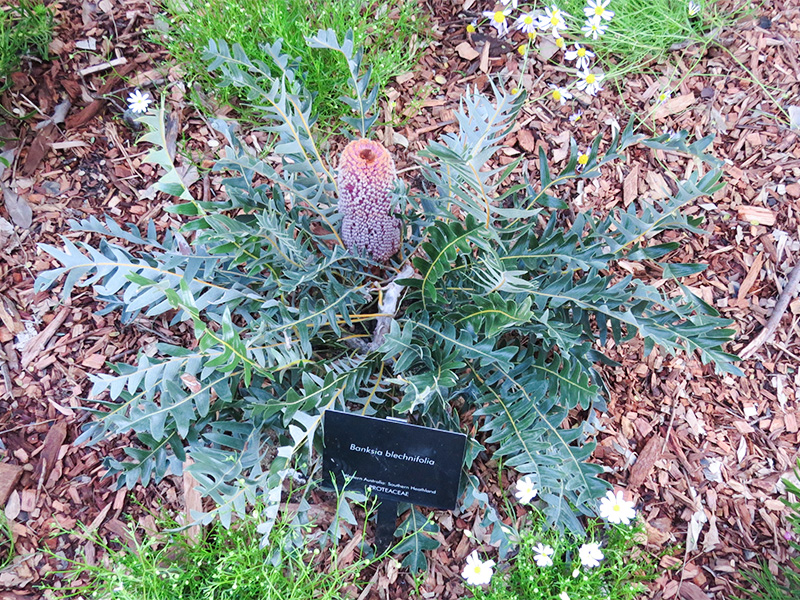| General Description | Banksia blechnifolia is a groundcover planted on high areas like rockeries, or around low retaining walls. It has an appealing reddish foliage and fern-like leaves. |
| Shape | Showy prostrate shrub. |
| Landscape | Ornamental use. |
| Propagation | From seed with plants flowering at about 4 - 5 years old. |
| Cultivation | Full sun. Well-drained, sandy, loamy, sandy loam soils with a acid, neutral and alkaline pH. Old and spent cones must be removed in order to help the flowering process. |
| Pests | Banksia blechnifolia is prone to scale and dieback (the soil-borne fungus, Phytopthora cinnamomi) but these are rare instances. |
| Notable Specimens | Kings Park and Botanical Garden, Perth, Australia. |
| Habitat | Found growing in areas with rainfall on average of 400 mm in white sand, heath or mallee heath. |
| Leaf Description | Banksia blechnifolia has deep-lobed leaves that are about 45 cm long and 4 - 10 cm wide. |
| Flower Description | Flower spikes that grow up to 6 - 16 cm long and 7 - 8 cm wide. Blooming occurs in spring, between late September and mid November. |
| Fruit Description | The woody follicles usually open when burnt. |
| Colour Description | The leaves are a bluish-green. The flowers can range from red, pink, cream, orange and brown. The flower spikes are velvet in colour. |
